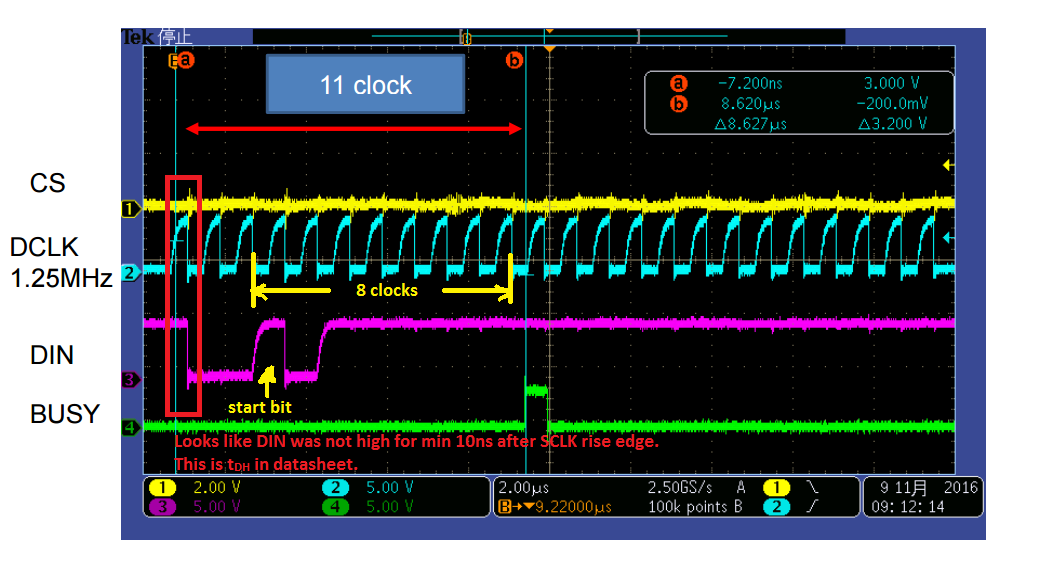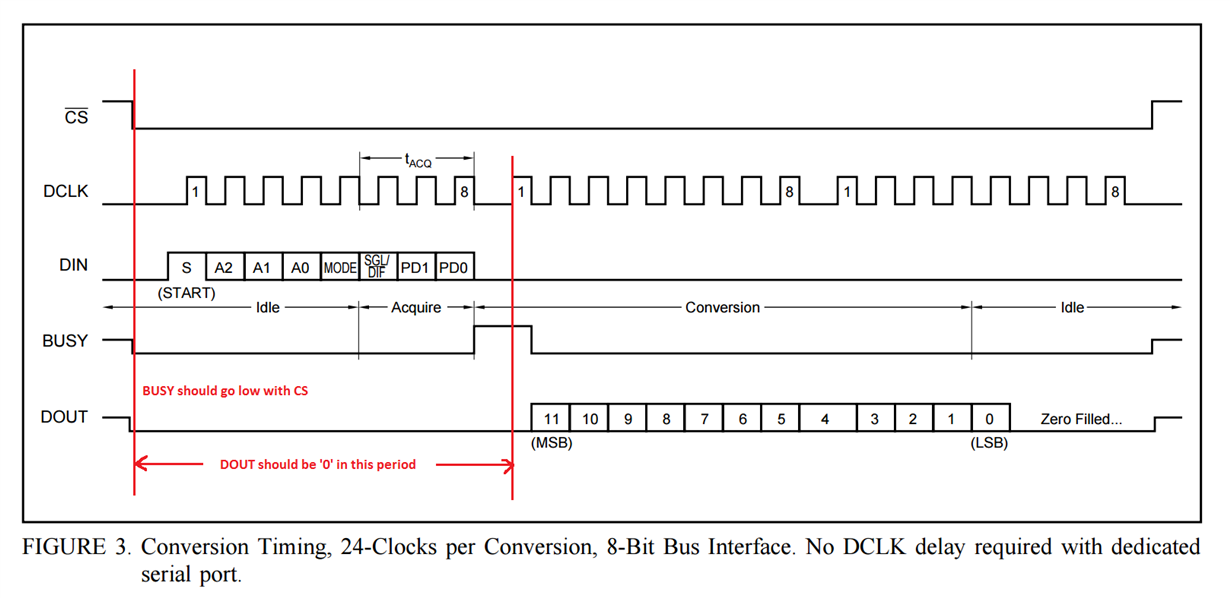Hello,
Our customer use the ADS7841.
The BUSY pulse occur at after 8 clocks.
In sometime, it occur at after 11 clocks.
Is it correct?
The configuration of the customer as follows.
12bit conversion mode
24clocks per conversion
Best Regards,
Naoki Aoyama




